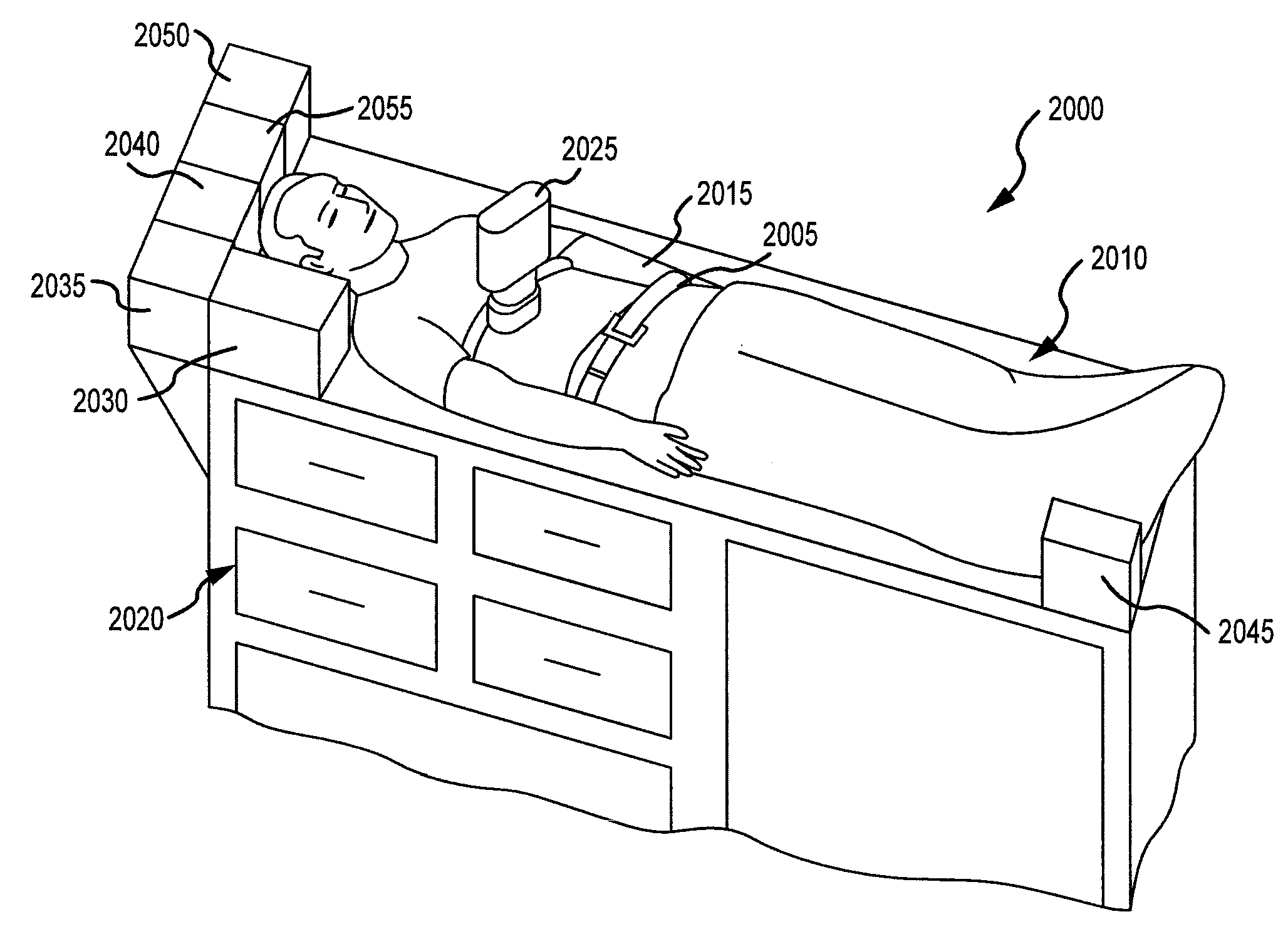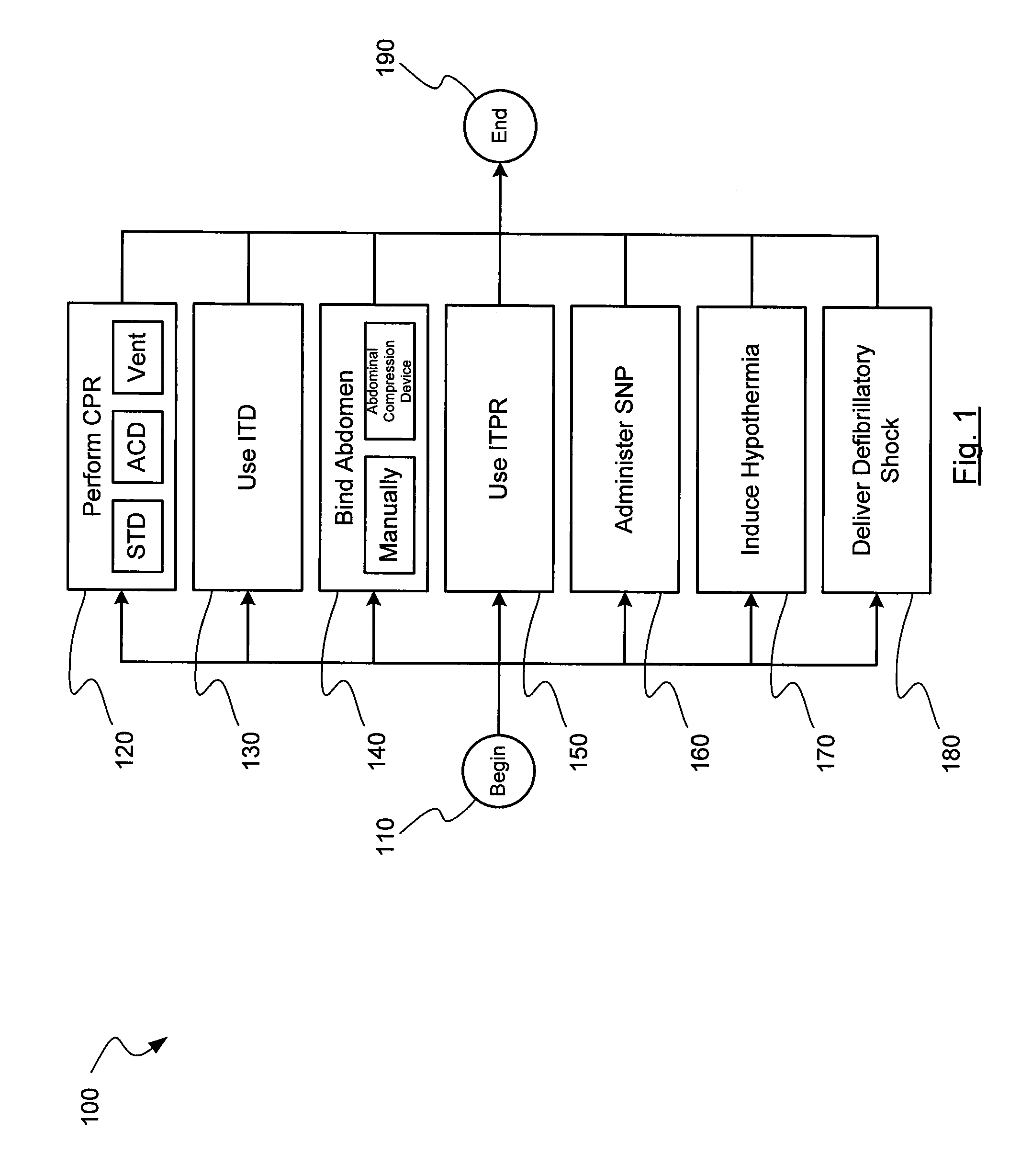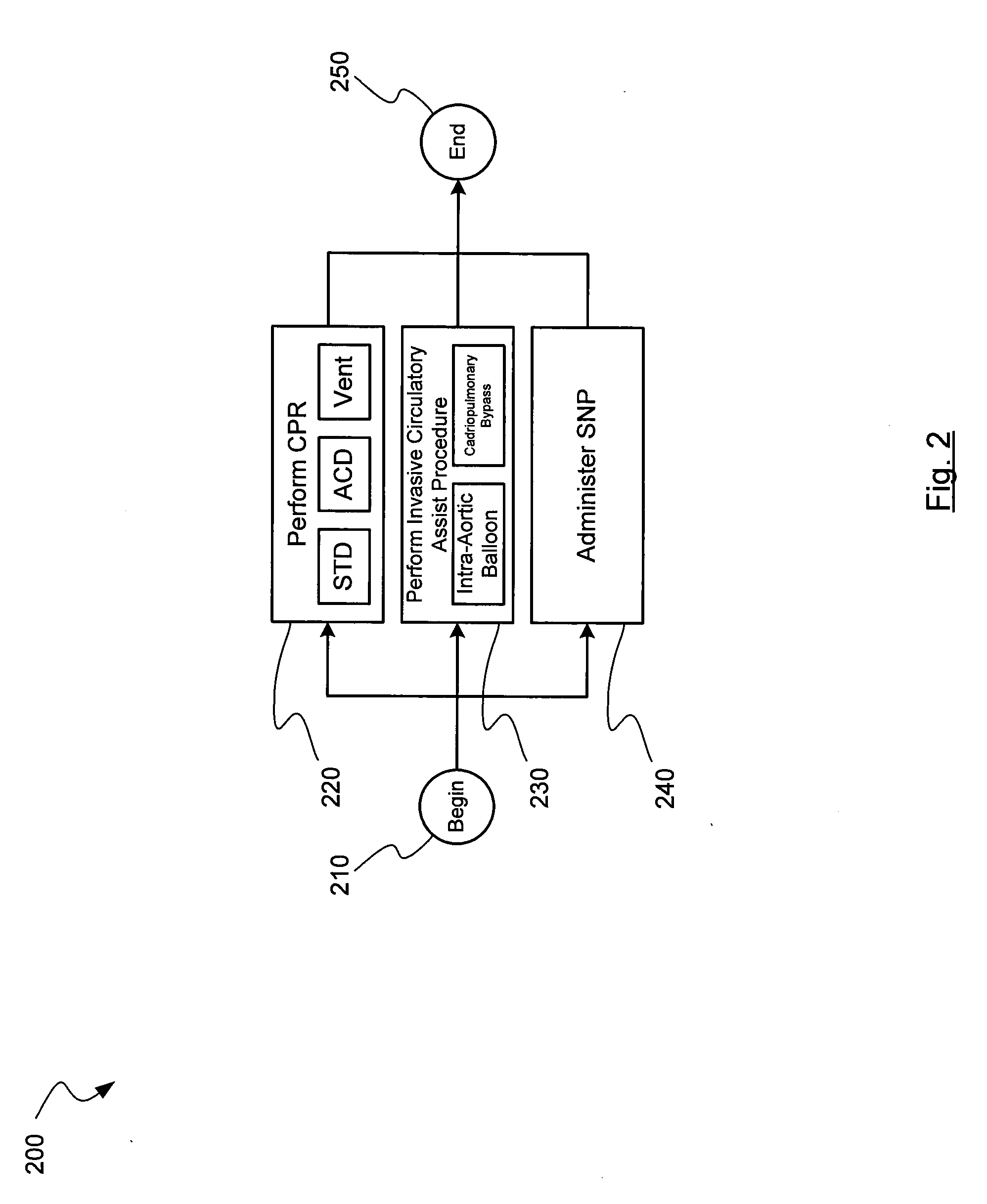[0005]In one embodiment, a method for increasing
blood flow to vital organs during CPR of a person experiencing cardiac arrest is provided. The method proceeds by performing CPR on a person to create artificial circulation by repetitively compressing the person's chest such that the person's chest is subject to a
compression phase and a relaxation or decompression phase. The method may also include administering one or more vasodilator drugs to the person to improve the artificial circulation created by the CPR. One such vasodilatory
drug is
sodium nitroprusside. By administering SNP, the person's blood vessels are dilated, thereby enhancing
microcirculation.
Nitric oxide (NO), that is released by SNP, plays an important role in regulating blood flow the heart and brain tissues. NO also helps to preserve
cell viability from injury when circulation to the heart and brain is restarted after a period of cardiac arrest an no circulation. In addition,
cyanide release during
metabolism of SNP by the body may help protect cells by modulating the cellular
metabolic rate until it too is metabolized.
Cyanide metabolism is tightly regulated by the body, and
enzyme processes which control
cyanide metabolism could be altered as well to maximize the benefit of SNP. While SNP alone would have the negative effect of reducing the person's
blood pressure, the performance of CPR serves to increase the person's
blood pressure, thereby countering any negative effects induced by the administration of SNP. Another pharmacological agent,
adenosine, is a potent coronary
artery dilator. Administration of
adenosine, or similar
adenosine-like derivatives and congeners, is also effective in promoting greater
perfusion to the heart, either alone or in combination with SNP or SNP-like drugs.
[0006]Performing CPR may include performing standard CPR or performing active compression decompression (ACD) CPR. The method may also include binding, manually or with an abdominal
compression device, at least a portion of the person's
abdomen. It may also include techniques to prevent blood flow to the legs, for example by binding the lower extremities, either continuous or in a synchronized manner with chest compressions. The method may also include at least temporarily preventing or impeding
airflow to the person's lungs during at least a portion of the relaxation or decompression phase using an impedance threshold device (ITD) that is coupled with the person's
airway. Such ITDs may entirely or substantially prevent or hinder respiratory gases from entering the lungs during some or all of the relaxation or decompression phase of CPR. As one specific example, an ITD may prevent respiratory gases from entering the lungs during the decompression phase until the person's negative intrathoracic pressure reaches a certain threshold, at which point a valve opens to permit respiratory gases to enter the lungs. The method may also include regulating the
airflow to or from the person's lungs using an intrathoracic
pressure regulator (ITPR). Such ITPRs may actively extract gases from the lungs during some or all of the relaxation or decompression phase of CPR. For example, a vacuum source may provide a continuous low-level vacuum except when a
positive pressure breath is given by a ventilation source, e.g. manual or mechanical
resuscitator. The applied vacuum decreases the intrathoracic pressure. Improving the artificial circulation created by the CPR may include increasing the carotid blood flow or increasing systolic and diastolic blood pressures. The method may also include stopping CPR and then restarting it multiple times, such as by, for example, in 30 second epochs for four cycles, to help preserve heart and
brain function from
reperfusion injury. Such a process may be referred to as stutter CPR. If stutter CPR (either ACD CPR or standard CPR) is to be performed manually, instructions and / or an aid may be provided so that the rescue personnel will have information about the sequence of delivering CPR and SNP, including in some embodiments, how to deliver the
drug or drugs and perform stop / start or stutter CPR. In some cases, devices used to perform CPR may be programmed to perform stop / start or stutter CPR or have such a mode available.
[0007]Administering
sodium nitroprusside may further improve a favorable characteristic of a
ventricular fibrillation waveform of the person at a point in time after an onset of the cardiac arrest. Other methods can also be used to perform CPR while administering one or more
vasodilator agents, with or without additional
airflow controllers / manipulators / regulators, like the ITD and ITPR, to regulate the intrathoracic pressure, including those that utilize a way to compress the chest in a circumferential manner and those that provide a way to prevent
reperfusion injury. These methods of CPR may further benefit from concurrent use of periodic, synchronized, or constant compression of the
abdomen and / or lower extremities to help maintain most of the
blood volume to the vascular spaces located anatomically above the
lung diaphragms. Such methods of CPR may further enhance protection of the heart and the brain by allowing for short and periodic pauses in CPR, thereby facilitating ischemic post-conditioning, a
biological process whereby the body's own defense mechanisms against injury due to poor blood flow further enhances the
recovery of
cell function after cardiac arrest and cardiopulmonary
resuscitation. Such methods may also include the use of
sodium nitroprusside and drugs like cyclosporine, which also facilitate ischemic post-conditioning.
 Login to View More
Login to View More 


